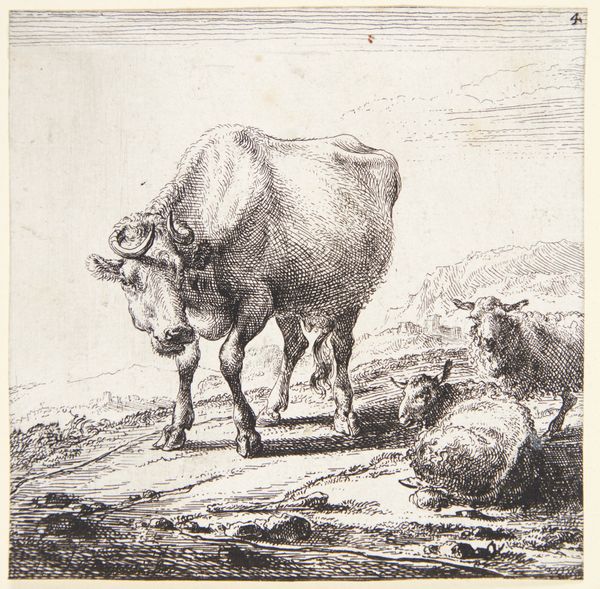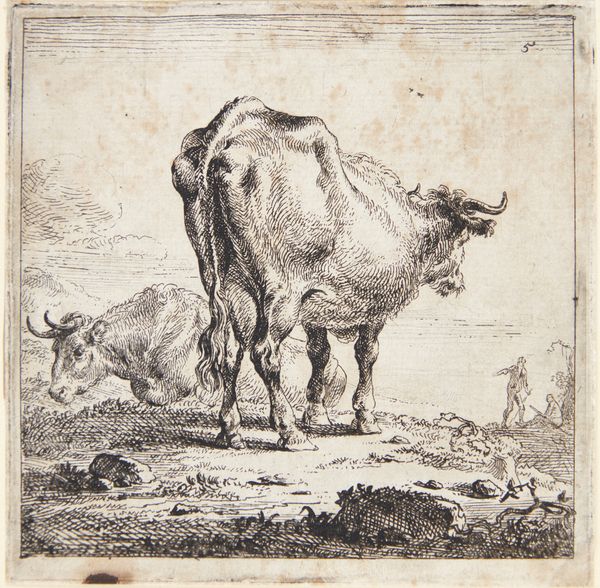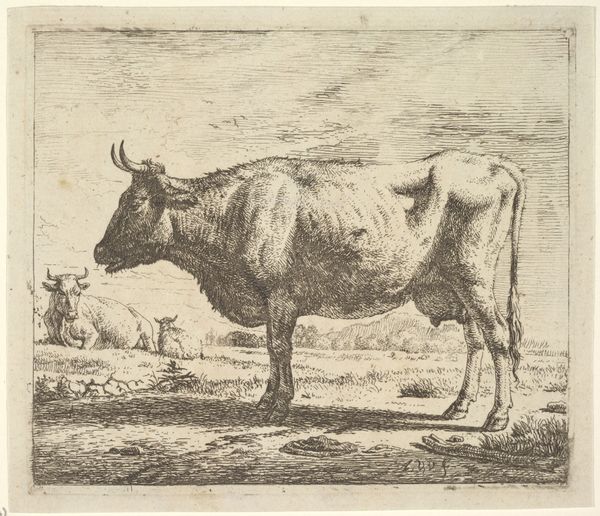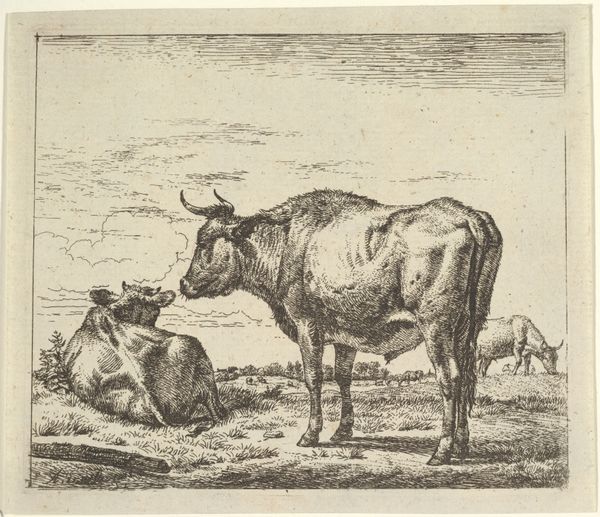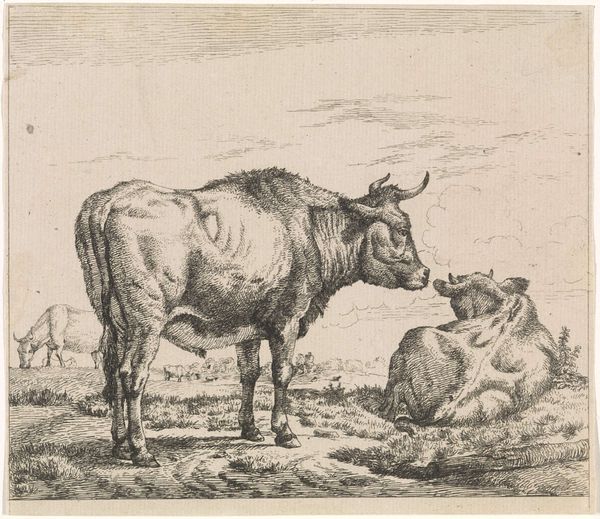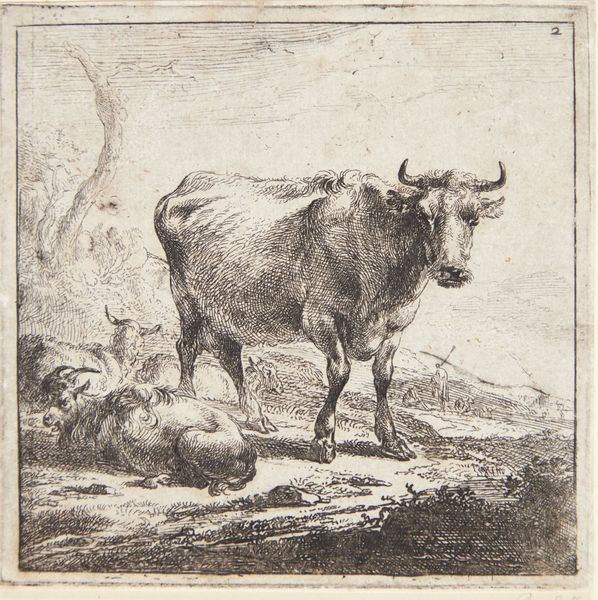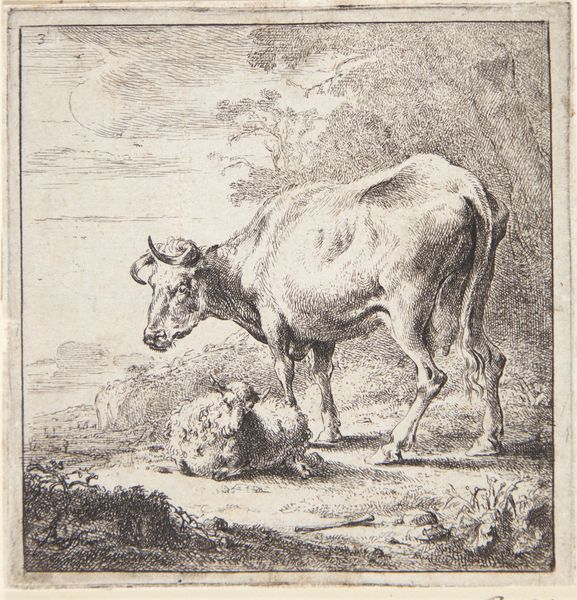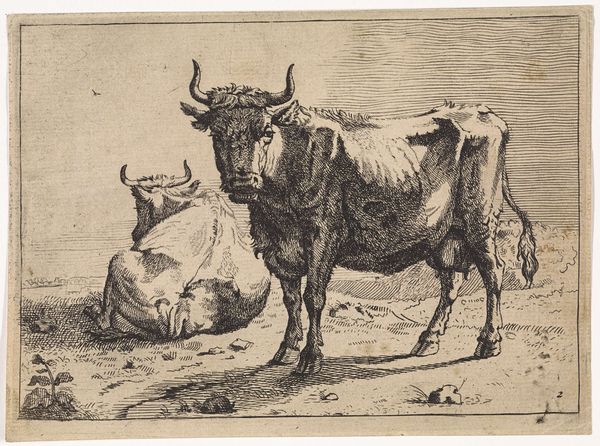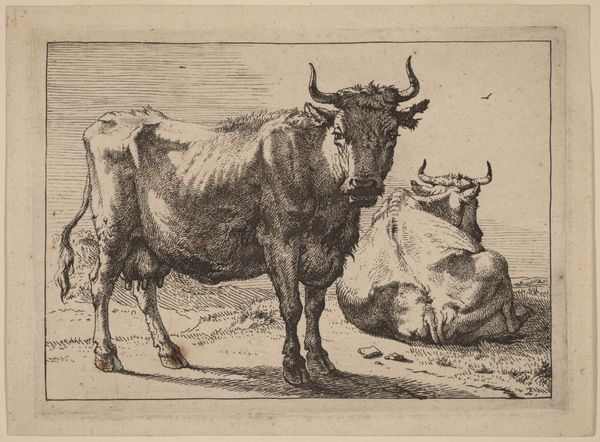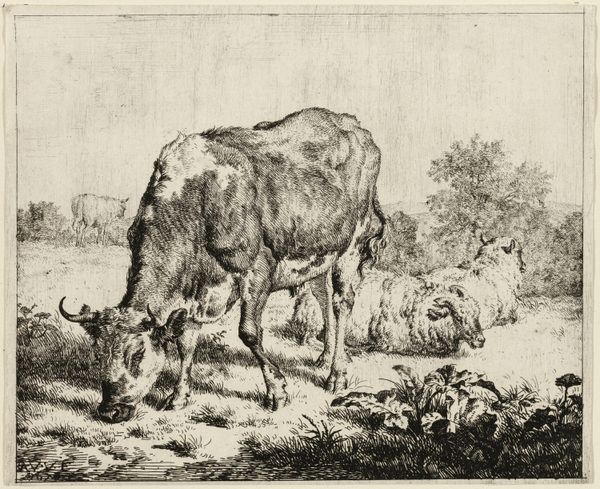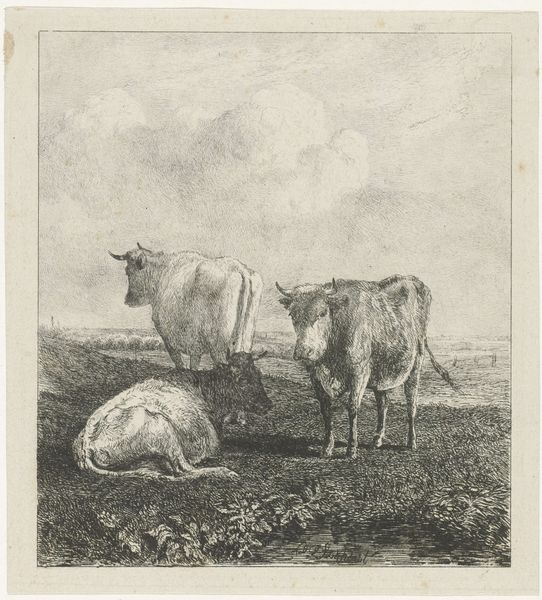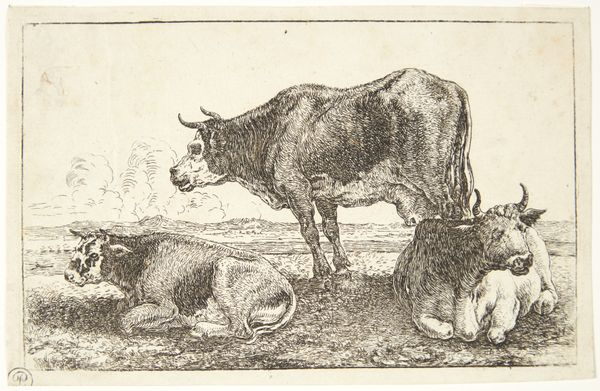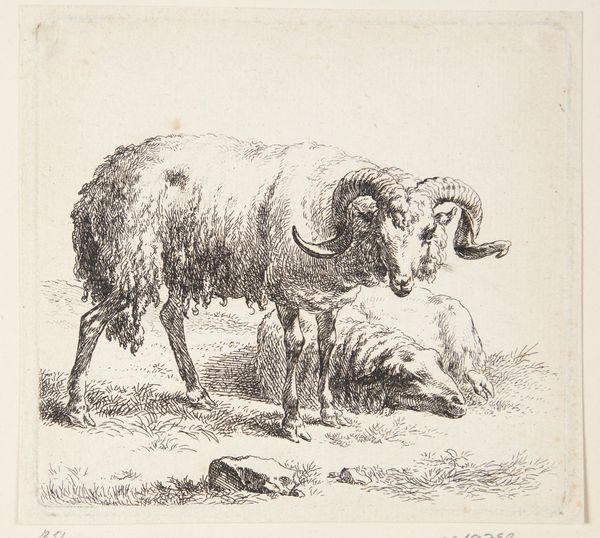
print, etching
#
baroque
#
animal
# print
#
etching
#
landscape
#
figuration
#
genre-painting
#
realism
Dimensions: 95 mm (height) x 96 mm (width) (plademaal)
Curator: At first glance, this etching, whose original title translates to "Standing Cow and Two Lying Sheep", conveys a sort of rustic calmness. There is a rather pleasing rhythm created by the dark etched lines. What do you think? Editor: Yes, calm is a good word. The stippled texture in the shading lends a certain softness to the otherwise graphic style. It's humble, agrarian; I almost smell the pasture. Curator: This print dates to 1644 and is the work of Nicolaes Berchem, a prominent figure in Dutch Golden Age landscape painting. Berchem was incredibly prolific. This piece showcases his mastery of etching, a process that democratized art production in the 17th century. Editor: The prominence of the cow is intriguing. While sheep were often allegorical symbols for docile Christian followers, cows lacked such immediate religious connotations. They were largely symbols of wealth, subsistence, of earthy, practical labor. Do you think there’s commentary on the shifting values of the time? Curator: I find it hard to overlook the economic value the Dutch placed on agriculture. During the Golden Age, depictions of farm life were not merely pastoral fantasies; they reflected the nation's economic strength and the cultural values that underpinned it. Etchings like this made these ideas accessible to a wider audience. The market, literally and figuratively, opens to a larger community. Editor: Indeed, and observe how the single cow dominates the frame. Consider it compared to the grouping of the two sheep. One is alert, the other passive; in heraldic symbolism, the sheep embodied patience, gentleness. Curator: Fascinating, because in this historical context, it really does illustrate this growing sentiment towards the role and power of a budding mercantile class. Editor: Exactly. The cow, substantial and forward facing, almost possesses a silent confidence as the smaller sheep occupy their usual field. It brings into play new symbolic languages. Curator: Considering Berchem's broader body of work, the positioning of rural subject matter within his art is particularly insightful. The market played a strong hand in what he chose to emphasize. Editor: This was a worthwhile reminder. I think the understated quality is very moving in itself. Curator: I agree, examining its historical influences provided valuable insight.
Comments
No comments
Be the first to comment and join the conversation on the ultimate creative platform.
